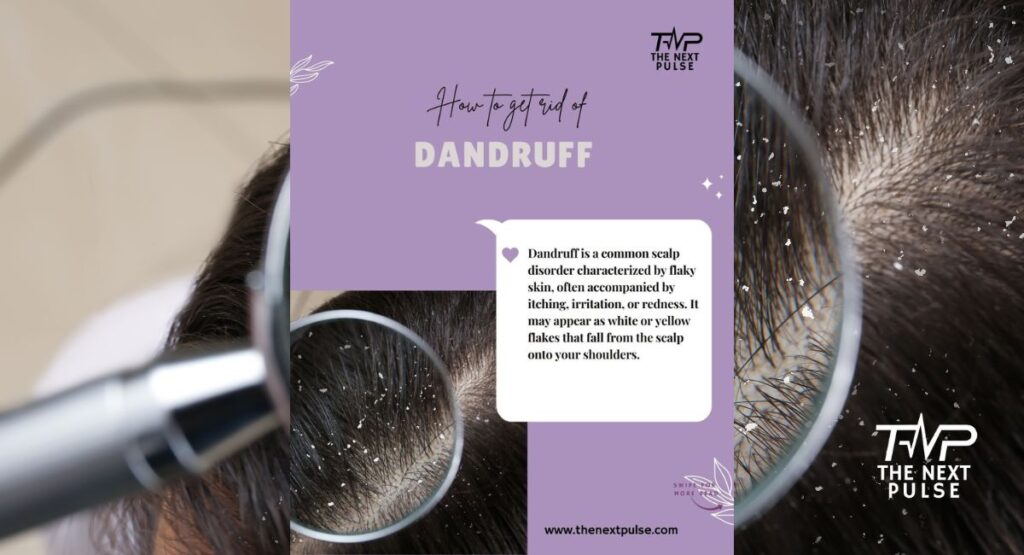Introduction: Flakes on Your Shoulders? Let’s Fix That
Nothing ruins your confidence faster than spotting white flakes on your shoulders during a meeting, a date, or even in the mirror before heading out.
Dandruff isn’t just about looks—it’s itchy, uncomfortable, and frustrating.
If you’ve tried every anti-dandruff shampoo in the aisle and still find yourself scratching your scalp, you’re not alone.
Here’s the truth: dandruff affects nearly 50% of the world’s population at some point in their lives.
But here’s the good news—dandruff is treatable. With the right mix of dermatologist-approved treatments, natural remedies, and lifestyle changes, you can finally say goodbye to flakes and get your scalp back in balance.
This guide breaks it all down for you.

What is Dandruff? Understanding the Condition
Dandruff is a common scalp disorder where dead skin sheds in the form of visible white or yellow flakes.
It often comes with:
- Persistent itchiness
- A dry or greasy scalp
- Redness or irritation
While it’s not dangerous, it can be embarrassing and affect your confidence.
What Dandruff Looks Like
- White or yellow flakes in your hair or on clothing
- Dry patches or greasy spots on the scalp
- Itchiness (worse around the crown or behind ears)
- Inflamed, irritated skin in severe cases
Common Causes of Dandruff
Many people assume dandruff means poor hygiene—but that’s a myth. It usually comes down to a few key triggers:
- Overgrowth of Malassezia Fungus
This fungus naturally lives on the scalp, but when it multiplies too much, it irritates the skin and causes flakes. - Seborrheic Dermatitis
A more severe form of dandruff marked by oily, yellow scales and redness. - Dry Scalp
Especially common in cold, dry winters when your skin loses moisture. - Product Sensitivity (Contact Dermatitis)
Some shampoos and styling products contain sulfates, parabens, or fragrances that can irritate your scalp. - Stress, Hormones & Diet
Stress and hormonal imbalances increase oil production. A poor diet lacking in nutrients like zinc or omega-3s can make dandruff worse.

Dermatologist-Approved Treatments for Dandruff
When regular shampoos don’t help, dermatologists recommend treatments that target dandruff at its source.
1. Medicated Anti-Dandruff Shampoos
Look for these proven ingredients:
- Ketoconazole – fights fungal growth
- Zinc Pyrithione – reduces inflammation and fungus
- Selenium Sulfide – slows down skin cell turnover
- Salicylic Acid – exfoliates dead skin buildup
- Coal Tar – reduces scaling in severe cases
Pro Tip: Rotate between 2–3 shampoos with different active ingredients to prevent resistance.
2. Topical Corticosteroids
Low-strength steroid creams or foams prescribed by dermatologists calm redness and inflammation.
3. Antifungal Creams
Clotrimazole or miconazole creams can treat localized itchy patches.
4. In-Clinic Treatments
For stubborn dandruff, dermatologists may recommend:
- Scalp peels with salicylic acid
- UV light therapy
- Microdermabrasion for scalp exfoliation
Results Timeline: Most people notice improvements in 2–4 weeks with consistent treatment.
Natural Home Remedies for Dandruff
If you prefer chemical-free options, these remedies are backed by science and safe to try at home.
1. Tea Tree Oil
- Mix a few drops with coconut oil.
- Massage into scalp, leave for 30 minutes, and rinse.
- Use 2–3 times weekly.
Results: Less itching and flakes in 2–3 weeks. get it here.
2. Apple Cider Vinegar Rinse
- Dilute equal parts ACV and water.
- Use after shampooing as a final rinse.
- Helps balance scalp pH and reduce fungal growth.
Results: Noticeable relief within 2 weeks. get it here
3. Aloe Vera Gel
- Apply pure aloe gel directly to scalp.
- Leave for 30–60 minutes before washing.
Results: Soothes itching almost instantly; flakes reduce in 1–2 weeks.
4. Baking Soda Exfoliation
- Mix with water to create a paste.
- Gently massage into scalp once a week.
Avoid if your scalp is dry or sensitive.

Long-Term Tips to Prevent Dandruff
Treating dandruff is half the battle—preventing it from coming back is where you win.
1. Follow a Scalp-Friendly Hair Routine
- Wash hair 2–3 times a week (not daily).
- Use lukewarm water, not hot.
- Avoid harsh chemical-based products.
2. Eat for Scalp Health
- Omega-3s (salmon, chia seeds, flaxseeds)
- Zinc-rich foods (pumpkin seeds, lentils)
- Probiotics (yogurt, kefir, kombucha)
3. Manage Stress
Meditation, yoga, regular sleep, and exercise help regulate oil production.
4. Keep Hair Tools Clean
Regularly wash combs, brushes, pillowcases, and hats to avoid fungal buildup.
Pro Tip: Use a silicone scalp brush while shampooing. It exfoliates dead skin, improves circulation, and helps shampoo work better.
FAQs
Q1. Can stress make dandruff worse?
Yes. Stress triggers oil production and scalp inflammation.
Q2. Is dandruff contagious?
No. You can’t “catch” dandruff from someone else.
Q3. Can dandruff cause hair loss?
Indirectly, yes. Constant scratching and inflammation can weaken hair roots.
Q4. Can I oil my scalp if I have dandruff?
Yes, but use light oils (coconut or tea tree oil). Avoid heavy oils that trap fungus.
Q5. How often should I switch shampoos?
Every few weeks, rotate between different active ingredients to stay effective.
Final Thoughts: Take Control of Your Scalp Health
Dandruff may be common, but it’s not permanent.
With the right mix of dermatologist-approved treatments, natural remedies, and simple lifestyle changes, you can finally put an end to flakes and itching.
The key is consistency—stick with your routine for at least a month. If the problem doesn’t improve, it’s time to see a dermatologist.💬 Your Flake-Free Journey Starts Today
Say goodbye to white flakes on your shoulders and hello to a healthy, confident scalp!

1 thought on “Say Goodbye to Dandruff: Proven Natural Remedies, Dermatologist Treatments & Prevention Tips”